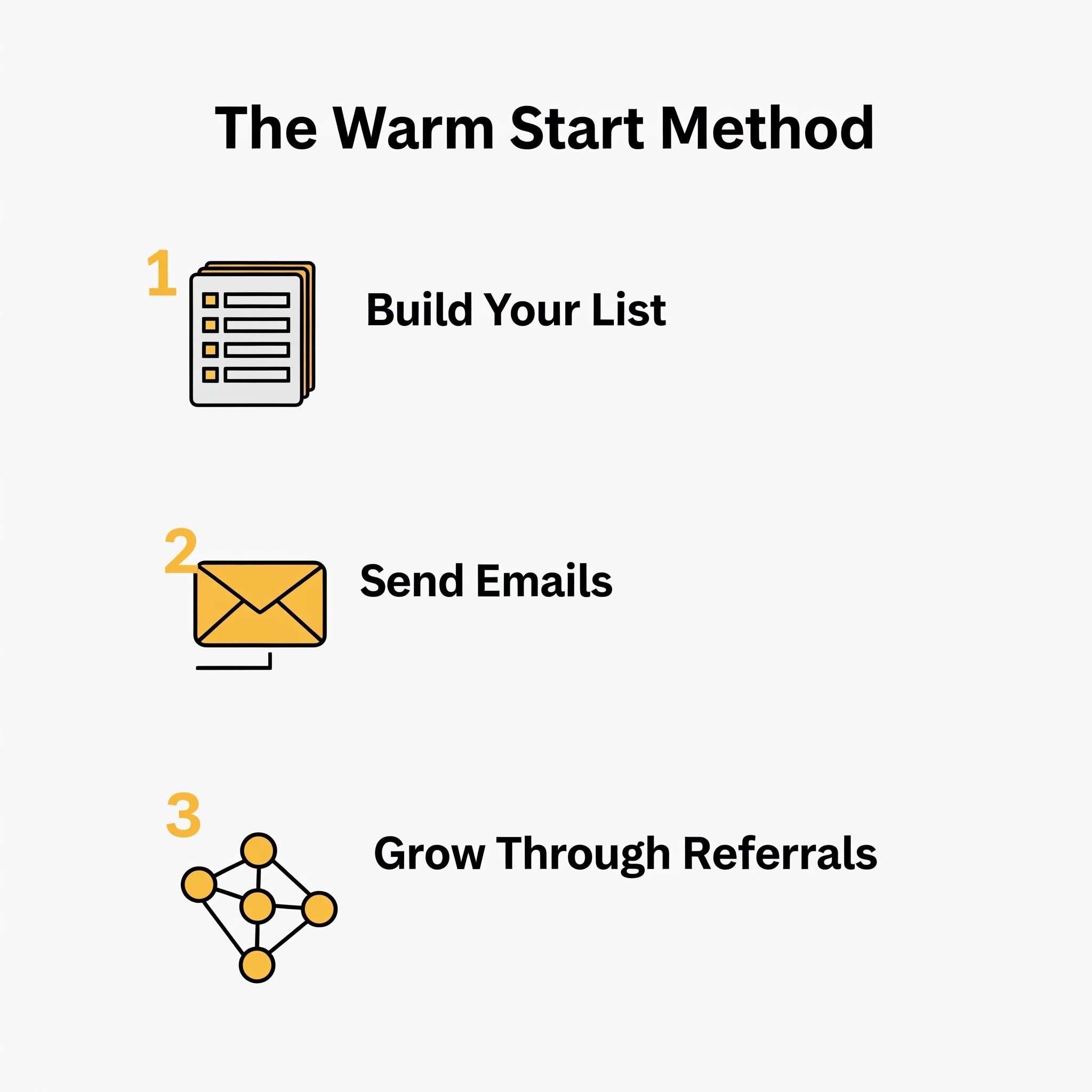Stop Waiting, Start Pitching: A Practical Guide to Finding Your First Freelance Clients
Published on: by: Chip Olson
A common misconception among new freelancers is that talent is enough. They build a portfolio, launch a website, and wait for clients to arrive. This is not a business strategy; it is a passive hope.
In freelancing, you are not just the service provider; you are the sales and marketing department. Your success is not determined by how well you wait, but by how effectively you act. Waiting for clients to find you is the slowest possible path to building a business. Proactive outreach is the only reliable method.
This guide provides four practical strategies for client acquisition.
Strategy 1: Leverage Your Immediate Network (The "Warm Start")
The lowest-hanging fruit is your existing network. These are people who already have some level of trust in you and your professional capabilities. This is the fastest path to your first project.
My first-ever consulting contract didn't come from an ad or a job board. It came from a brief email I sent to a project manager I'd worked with two jobs prior. He didn't need my services, but his brother-in-law ran a small business that did. That connection was only possible because I proactively announced what I was doing.
Your action items for this strategy are simple:
- 1. Create a List: Open a spreadsheet. List every professional contact you have: former colleagues, managers, vendors you worked with, even professionals in your personal life.
- 2. Draft an Announcement: Write a short, direct email or message. Do not make it sound like a desperate plea for work.
- Example: "Hi [Name], Hope you're well. Just a quick update—I've recently launched my freelance business, [Your Business Name], where I'm specializing in [your specific service] for [your ideal client]. If you know of anyone who might need support in this area, I'd appreciate you keeping me in mind. My portfolio is available at [Link]."
- 3. Make a Clear "Ask": The goal is not to sell directly to your contacts. The goal is to ask for referrals. It's a low-pressure request that makes it easy for people to help you.

Strategy 2: The Direct Outreach Method (The "Cold Start")
This is the heavy lifting of building a client base from nothing. It requires research, precision, and a value-first mindset.
Early on, I made the mistake of volume. I found a list of 50 potential clients and sent them all the same generic email about my services. The result was predictable: zero replies and a wasted afternoon. The next week, I spent three hours researching just two companies, identified a specific marketing gap in their public materials, and sent a two-sentence email pointing it out and suggesting a solution. I landed a meeting with one of them. The lesson is that research is more valuable than volume.
Your action items for this strategy:
- 1. Identify Your Ideal Client Profile (ICP): Who do you help? What industry? What size company? What specific problem do you solve for them? Be specific.
- 2. Build a Prospect List: Use LinkedIn, industry directories, and targeted Google searches to find companies that match your ICP. Find the name of the correct contact person (e.g., Head of Marketing, Creative Director).
- 3. Craft a Value-First Pitch: Your email must not be about you; it must be about them.
- Identify a specific, observable problem or opportunity (e.g., "I noticed your recent blog posts aren't optimized for search," or "I see you're launching a new product and might need support with X").
- Briefly state how your service addresses this specific point.
- End with a simple question to start a conversation, like "Is this something you're currently focused on?"
- 4. Keep it Short: The goal of the first email is to get a response, not to close a deal. Three to five sentences is sufficient.

Strategy 3: Using Freelance Marketplaces Strategically
Platforms like Upwork or Fiverr can be useful for building initial momentum, but they must be approached with a clear strategy to avoid competing in a "race to the bottom" on price.
- Specialize Your Profile: Do not list yourself as a "jack-of-all-trades." Create a profile that highlights your expertise in a specific niche.
- Customize Every Proposal: Read the job description carefully. Address the client's specific needs in your proposal. Generic, copy-pasted proposals are obvious and get ignored.
- Build Credibility: Start with smaller, well-defined projects to earn your first 5-star reviews. Positive feedback is critical for attracting higher-quality clients on these platforms.
Strategy 4: Content as a Magnet (The Long-Term Play)
Active outreach is how you start. Inbound marketing is how you build a sustainable business where clients come to you. This is a long-term strategy.
Your portfolio, your blog, and your professional social media presence are not just showcases; they are client-acquisition tools. Every article you write, like the one on calculating your billable hours, demonstrates your expertise. Over time, this builds authority and attracts clients organically through search engines. This method shifts your effort from hunting (outreach) to farming (attracting).
Conclusion
Waiting for clients to find you is not a business strategy. Your success will be a direct result of the actions you take to find work. Review the four methods outlined above—The Warm Start, The Cold Start, Strategic Marketplace Use, and The Long-Term Content Play. Pick one to focus on this week and execute it. Your freelance business depends on it.
- Chip Olson
